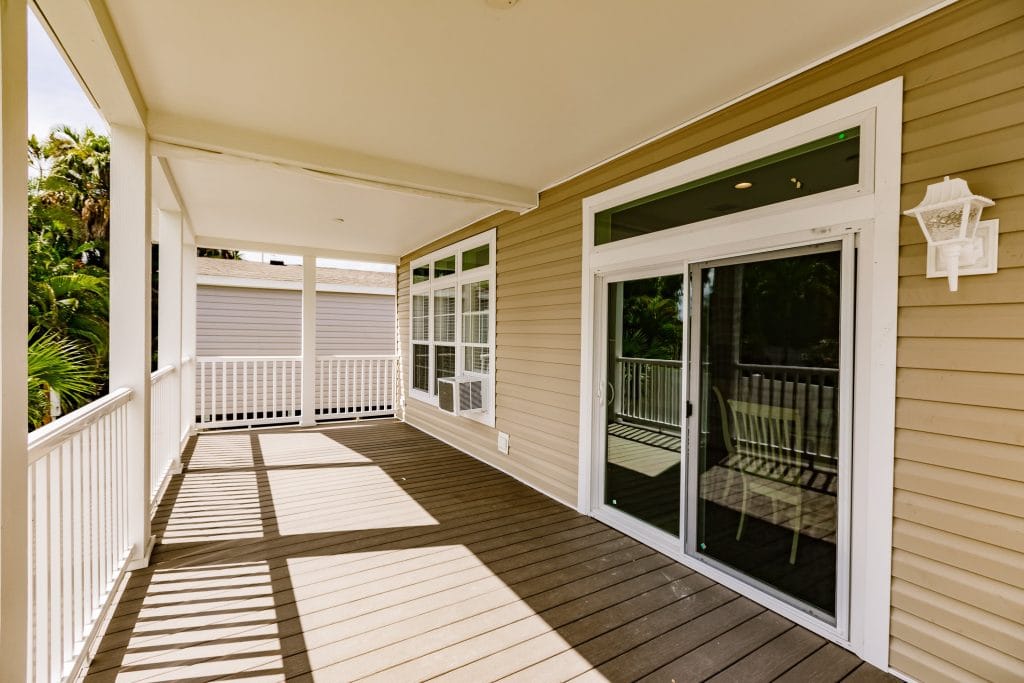
When considering building a new home, one of the biggest decisions you’ll make is choosing between modular and traditional stick-built construction. Each option offers distinct advantages, but if cost is a top concern, it’s worth taking a detailed look at how the two compare in every phase of the homebuilding process. From materials and labor to site preparation, installation, and financing, modular home prices can offer surprising savings without sacrificing quality, comfort, or long-term value.
Breakdown of Material and Labor Costs
The materials used in modular homes and traditional builds are largely the same, such as wood framing, drywall, insulation, roofing, and finishes, but the way they’re sourced, managed, and assembled makes a big difference in total cost. Because modular homes are built in climate-controlled factories, the process minimizes waste, delays, and inefficiencies that often increase expenses in site-built construction.
Factory Efficiency Versus On-Site Labor
Modular homes benefit from what’s known as “factory efficiency.” Building components are fabricated indoors using precise measurements and computer-guided machinery. This controlled environment means that every piece fits together perfectly, materials are ordered in bulk, and production crews work year-round without weather delays. As a result, modular home manufacturers often save up to 20% on materials through bulk purchasing and reduced waste. Those savings are passed on to buyers through lower overall modular home prices.
In contrast, traditional site-built homes are subject to fluctuating material costs, unpredictable delivery timelines, and labor inefficiencies. Weather can delay framing, foundation work, or roofing, forcing contractors to adjust schedules or pay for additional labor hours. Skilled labor shortages in many regions can also raise costs for electricians, plumbers, and carpenters. When you factor in extended construction times and higher hourly wages, labor on a traditional build can account for 40% or more of the total cost. Modular construction typically cuts that labor portion significantly because so much of the work is completed in the factory.
Another area where modular homes shine is quality control. Every module goes through rigorous inspection during production, ensuring consistency across every section of the home. In a traditional build, quality can vary depending on the crew, weather conditions, and oversight on-site. Although both types of homes must meet local building codes, modular homes are inspected multiple times during the manufacturing process to verify compliance. That attention to detail not only saves time but also reduces the likelihood of costly mistakes or rework once the home is delivered.
Site Preparation and Installation Fees
Whether you choose modular or traditional construction, you’ll need to prepare the land for your new home. This includes clearing the lot, grading, and installing utilities such as septic systems, wells, and electrical connections. However, there are distinct differences in how these costs break down between the two approaches.
Site preparation for a traditional stick-built home often involves a longer timeline and more coordination between contractors. The foundation must be poured, cured, and inspected before framing begins, which can take weeks. In regions with heavy rainfall or challenging soil conditions, those delays can stretch even further, increasing costs for equipment rentals, labor, and project management.
Modular homes, on the other hand, allow much of this work to occur simultaneously. While your home is being built in the factory, the foundation and utility work can progress on-site. This parallel timeline shortens the overall project duration by weeks or even months, saving both time and money. Once the modules are delivered, they’re installed on the prepared foundation in just a few days. The home is then sealed, finished, and connected to utilities, dramatically reducing the labor and equipment expenses compared to a full stick-built process.
Permit and Inspection Charges
Another factor that affects the total cost of any home build is permitting and inspection. Traditional construction typically requires a series of on-site inspections at various stages, including foundation, framing, electrical, plumbing, insulation, and final completion. Each inspection involves coordination, potential delays, and sometimes rework if something doesn’t meet code the first time.
Modular homes streamline this part of the process. Because modules are constructed to meet state and local codes in a factory setting, many inspections are already completed before the home arrives on your property. Local inspectors will still need to verify the foundation, utility hookups, and final installation, but this often involves fewer visits and less back-and-forth. That efficiency can help reduce costs associated with scheduling, delays, and additional contractor time.
It’s also worth noting that modular home builders often assist with permitting and code compliance, simplifying what can be a complicated process for homeowners building a traditional house. With expert guidance, you’re less likely to encounter surprise costs or permit-related setbacks.
Financing and Insurance Differences
Beyond materials and labor, financing and insurance can significantly affect the total cost of ownership for modular and traditional homes. Although modular homes were once seen as harder to finance, lenders today recognize their value and durability, making financing options more widely available and comparable to conventional mortgages.
Many buyers find that modular homes qualify for the same loan types as stick-built properties, including FHA, VA, and conventional mortgages. The main difference is the disbursement schedule. Traditional builds typically release funds in phases as construction milestones are reached. Modular home loans, on the other hand, may release funds in larger portions, first for the factory build, then for site preparation and final installation.
Insurance rates can also differ. Because modular homes are built in a controlled environment, they’re less susceptible to weather-related construction risks such as water damage, theft of materials, or vandalism. This reduced risk can translate into slightly lower builder’s risk insurance premiums during construction. Once installed, modular homes are treated just like any other permanent residence and qualify for standard homeowner’s insurance policies.
Long-Term Value and Resale Trends
One common misconception is that modular homes depreciate in value like mobile or manufactured homes. In reality, modern modular homes are constructed to the same, or even higher, standards as traditional homes and are considered permanent structures. As a result, their resale values tend to mirror those of site-built homes in the same area.
Because modular homes are often built with energy-efficient materials and advanced insulation techniques, they can also save homeowners money on utilities over the years. Features like double-pane windows, tight construction seams, and energy-rated appliances reduce heating and cooling costs, which can make a modular home more attractive to future buyers.
Maintenance costs over time also tend to be lower with modular homes. Since the components are built indoors, they aren’t exposed to moisture during construction, reducing the likelihood of warping, mold, or early wear. Combined with their efficient build process and durable materials, modular homes often deliver a strong return on investment while remaining affordable to maintain.
From a long-term perspective, modular homes also offer flexibility. Because they’re built in sections, it’s possible to expand or remodel more easily than with traditional homes. That adaptability can appeal to growing families or homeowners who want to customize their spaces in the future, adding further value to the property.
Comparing Overall Costs and Timeframes
When you add up all the expenses, including materials, labor, site preparation, permits, and financing, it becomes clear that modular home prices are generally 10% to 25% lower than comparable stick-built homes. In addition, the time savings can be substantial. A traditional home might take eight to twelve months from groundbreaking to move-in, while a modular home can often be completed in three to six months.
Those shorter timelines mean reduced carrying costs such as construction loan interest, temporary housing expenses, and utility setup delays. Homeowners can begin enjoying their new homes sooner, which can also reduce stress and uncertainty.
It’s important to note that while modular homes often cost less upfront, the quality is by no means lower. In fact, the precision and quality control involved in factory construction often result in a tighter, more durable structure that stands up well to weather and time. For homeowners in regions like Southwest Florida, where humidity, rain, and coastal conditions can challenge traditional builds, that durability is a significant advantage.
Environmental and Sustainability Considerations
Another area where modular construction excels is sustainability. Factory building drastically reduces material waste, often by as much as 50%, because materials are measured and reused efficiently. Any leftover components can be recycled rather than discarded. Additionally, modular homes tend to produce fewer on-site emissions since construction is completed in a central facility rather than involving multiple deliveries and heavy machinery at the build site.
For eco-conscious buyers, modular homes can be designed with green technologies like solar panels, high-efficiency HVAC systems, and smart home integrations. These energy-saving measures can reduce monthly bills and contribute to a smaller environmental footprint, making them an appealing choice for those who want to combine savings with sustainability.
Value Beyond Cost
While the cost advantages of modular construction are clear, the benefits go far beyond price. Shorter build times, consistent quality, energy efficiency, and streamlined financing all make modular homes an increasingly popular choice for today’s homeowners. For those who want a high-quality, custom-designed home without the stress and unpredictability of traditional construction, modular housing offers a practical and appealing alternative.
The key takeaway is that modular home prices deliver excellent value without compromise. You can enjoy the same design flexibility, quality craftsmanship, and long-term durability as a site-built home, often for significantly less money and in a fraction of the time. And with modern modular designs that rival traditional architecture in style and comfort, it’s easy to see why more buyers are turning to this smart building method.
Build Your Dream Home with LeeCorp Homes
If you’re considering a manufactured home in Southwest Florida, LeeCorp Homes is ready to help. A family-owned business founded in 1983, we’re committed to quality craftsmanship and ensuring you get a home you can be proud of. No matter your lifestyle, we can create a home that’s right for you, whether you’re thinking of a simple single-wide hideaway, a waterfront stilt home, or a three-bedroom home designed to welcome friends and family. We’re ready to make your plans a reality.
As specialists in manufactured homes, we know how to help you get the most from your home, from ensuring your home meets local zoning and building requirements to strategic siting that takes full advantage of waterfront or golf course views to ADA compliance if you’re looking for extra peace of mind.
If you want to install a home on your own property, we provide full site development services, everything from grading to well and septic system installation. We also provide state-of-the-art replacement homes if you’re ready for an upgrade from an existing manufactured home.
We make the homebuilding process simple for you by taking care of everything. We oversee every step of the construction process to be sure everything’s perfect for you. We offer simple and transparent pricing, and our services include the installation of landscaping, carports or garages, sunrooms, and storage sheds.
Contact us today to learn more about how we can help you build the home you’ve always wanted. Let’s turn your dream into a place you’ll love to call home.

No comment yet, add your voice below!